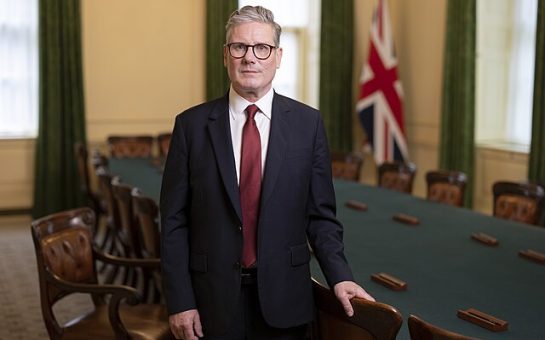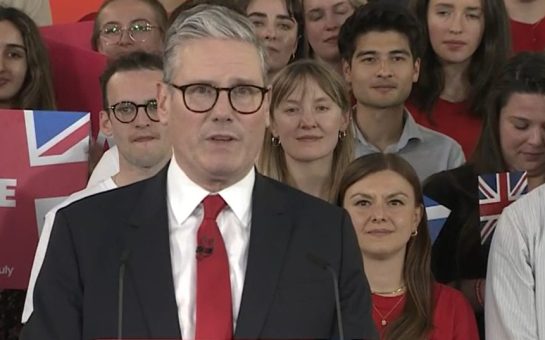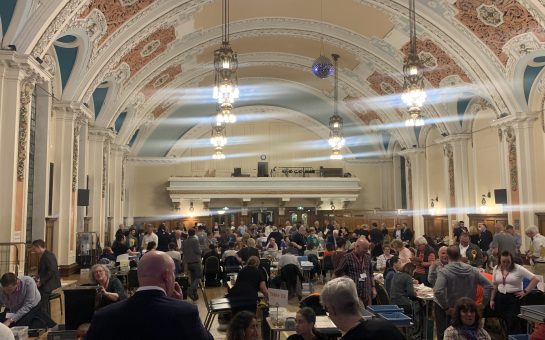With the 2019 General Election now over and Christmas on our minds, we take a look back to the last December snap election in 1923 for how things played out then…
The year 1923 was a year where certain events happened in various parts of the world which wrote a significant chapter in their country’s history.
Thursday’s election certainly has the potential to do just that, and in the aftermath of the landslide Tory victory MM takes a look at FIVE momentous events from five different countries across the world that took place in 1923.
Acerbo Law
Location: Rome, Italy
After the 1917 Revolution in Russia, the spread of socialist ideals began to spread around Europe and the world, and in Benito Mussolini’s 1922 March on Rome socialism’s opposing force known as ‘fascism’ came to the fold.
The March on Rome, though, didn’t mean full power for Mussolini in the Italian cabinet. But in 1923, that changed when Acerbo law was passed by Italian economist and fascist politician Giacomo Acerbo.
The passing of Acerbo Law meant that if a political party gained the most votes in an Italian election, it would see them gain the traditional two-third seat majority required as long as they gained 25 percent of the votes in the election.
The 1924 election worked out well for the National Fascist Party of Italy headed by Mussolini, who gained the majority they needed with the passing of Acerbo Law a year earlier playing a decisive role.
Mussolini became ‘Duce’ (leader) of Italy in 1924, and Italy wouldn’t hold another general election until 1946.
Mussolini would go on to become one of the most significant political figures of the 20th century.
Beer Hall Putsch
Location: Munich, Germany
Nazi leader and German dictator Adolf Hitler was one of the most ruthless dictators of all time, he would go on to become a tyrant and play a significant role in unleashing the outbreak of the Second World War across Europe.
The origins of Hitler as a politician in Germany came at the 1923 Beer Hall Putsch in Munich. Inspired by his political ally Mussolini from the successful ‘March on Rome’ a year previously, Hitler and his Nazi associates plotted to overthrow the Weimar government as they were frustrated about living in a state of economic crisis and in debt due to war reparations imposed by the Treaty of Versailles.
Gustav Von Kahr, head of the Bavarian State government, addressed a large crowd at the Bürgerbräukeller in November 1923, a meeting Hitler and his men marched in on and declared a ‘national revolution’ hoping that the Nazis would prove too strong for the Bavarian State government.
Hitler fired shots before the Nazis went to capture other buildings in Munich, but security and the Bavarian police force suppressed the rising and it consequently failed.
Hitler was charged with treason for his part in the Putsch and was sent to jail in February of 1924 where he wrote his book entitled Mein Kampf (My Struggle) where he outlined his extreme aims in foreign policy in relation to anti-Semitism and anti-Communism.
The Beer Hall Putsch sowed the seed for the Nazis, and when Hitler returned from jail the seed began to grow bigger and bigger as Hitler worked his way into power before becoming Fuhrer (leader) of Germany in 1933.
Kuomintang and Chinese Communist Party join forces
Location: Beijing, China
During the 1910s, two countries, who would go on to be run by probably the two most ruthlessly autocratic dictators of all-time in Joseph Stalin and Mao Zedong, underwent change from a long-standing dynastic regime to a leadership struggle.
The Soviet Union’s Romanov Dynasty collapsed in 1917, but six years earlier China’s Qing Dynasty was overthrown. The 1917 October Revolution in Eastern Europe became the equivalent of the 1911 Xinhai Revolution in Far East Asia, where an imperial dynasty was overthrown.
Leadership in China became a struggle between the Kuomintang (Nationalists) and the CCP (Communists), both of whom believed in the ideal of a united Chinese Republic.
First though, they had to join forces to eradicate warlordism in China and in 1923 they agreed to do just that before forming the first United Front in 1924.
After three months studying in Moscow, KMT leader Sun Yat-Sen was strongly against the Soviet model of politics, but his counterparts in the CCP were. When the more dominant KMT joined forces with the CCP it gave Communism a platform to increase its influence in China.
After two United Fronts were formed and achieved their aims, the two forces collided in a brutal Civil War that started in 1927 and would last for over two decades – a conflict that coincided with the Sino-Japanese War (1937-45).
The year 1923 was a significant year in the prelude to Chinese Civil War.
The leadership struggle to lead China was a long one, eventually ending in 1949 when Chairman Mao of the Communist Party became leader of the People’s Republic of China in 1949.
Mao would go on to use a model similar to the one the Soviet Union used under Stalin as Communism spread across the world in the aftermath of the Second World War.
The fall of the Ottoman Empire as Turkey becomes a Republic
Location: Ankara, Turkey
When the Industrial Revolution took place in Western Europe in the 18th and 19th centuries, Britain, along with the rest of Western Europe and the United States, benefitted massively from new manufacturing processes which saw them at the head of all the new technology in the manufacturing of chemicals and raw materials and the development of machinery.
With the Western world in a state of economic prosperity, the east suffered and fell behind in what became known as the ‘Great Divergence’ – which in many ways can still be felt today (although Russia and China may have something to say about that).
Britain and the US were the chief beneficiaries, but the chief non-beneficiary was the Ottoman Empire as it fell into a state of decline after it had once been the heartlands of Europe in the 16th century.
The Ottoman Empire was also an Islamic country, and with the Western nations very much Christian-dominated, religious tensions increased in the world as Christianity asserted itself as the dominant religion with a spread of people practising the faith.
As the Ottoman Empire went into decline and became dragged into war, they vented their frustration on the Armenians in the 1915 Armenian Genocide where over a million Armenians were butchered at the hands of the Sultan Abdul Hamid II and the Young Turks.
This genocide took place under the cover of a World War, but after the war the Ottoman Empire was damaged beyond recovery and in 1923 reformed as the Turkish Republic under Kemal Atatürk.
The capital changed from Istanbul to Ankara in what is still modern day Turkey as we know it.
Wembley Stadium constructed
Location: London, United Kingdom
Finishing the article on a bright note and away from the brutal power-mad politics that encapsulated the 20th century, we’ll now focus on the construction of Wembley Stadium.
The grass was cut by King George V, and the stadium opened its doors to the 1923 FA Cup final between Bolton Wanderers and West Ham United, a game Bolton won 2-0 in the ‘White Horse Final’ where over 126,000 (still a record attendance to this day in England) fans crammed into Wembley Stadium and the bold image for spectators was of a policeman riding a white horse – one of the most iconic photos in British football history.
The old Wembley became hallowed turf for AC Milan, Manchester United, Ajax, Liverpool and Barcelona; each of whom won the five Champions League finals to be staged at the old Wembley (1963, 1968, 1971, 1978, 1992).
The ‘home of football’ also hosted the 1966 World Cup final which England won against Germany, only for Germany to claim a penalty-shootout victory on the ground 30 years later over England in the semi-finals before beating the Czech Republic in the final.
Before its demolition in 2000 and reconstruction in 2007, Wembley consistently hosted some of football’s biggest events.
Now under its famous archway, Wembley retains its status as perhaps the world’s most iconic football stadium, with its origins starting out in 1923 – a massive year for Britain, and not just because of the December general election.



